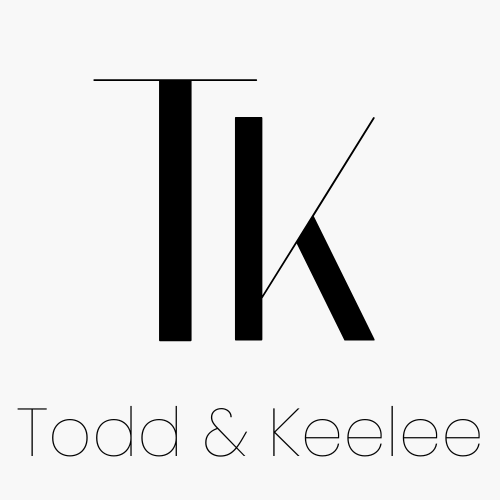Selling is an art form. Whether you’re working with seasoned executives or pitching to new clients, mastering professional sales strategies is key to standing out in a competitive marketplace. The best salespeople don’t just wing it—they rely on tried-and-true techniques to close deals effectively and consistently.
This guide uncovers 10 critical sales techniques for success to elevate your skills and transform how you approach selling. By refining your approach, you can streamline the process, reduce objections, and build lasting client relationships.
Why Focused Selling Strategies Matter
Sales is about more than simply presenting a product or service. It’s about understanding client needs, creating value, and forging relationships that go beyond the immediate transaction.
By learning and applying advanced techniques in your sales strategy, you can not only close deals but also position yourself as a trusted advisor and partner. Master these 10 sales techniques below to stand out and excel in your field.
1. Research Clients Thoroughly Before Engagement
Why Research is Essential
The key to a successful sales pitch lies in preparation. Before you meet a potential client, take the time to learn about their business, industry trends, competitors, and specific pain points.
By conducting this research, you demonstrate a genuine interest in their success and establish credibility as an informed professional.
Tools to Help You Research
- LinkedIn & Social Media Profiles – Review their public activity to understand their interests.
- Company Websites – Look into their mission, values, and press releases.
- Industry Reports – Stay updated on overarching trends in their market.
2. Craft a Personalized Value Proposition
Understand the Unique Why
Each prospect has distinct needs. Avoid cookie-cutter pitches by tailoring your value proposition specifically to those needs. Instead of focusing purely on your product, articulate how your solution provides measurable ROI or solves specific challenges they face.
Personalization in Action
Consider this example: Instead of saying, “Our software improves productivity,” try “Our software can reduce the 20% downtime your teams experience during peak periods, saving you over $50,000 annually.”
3. Master Active Listening
How to Listen Like a Pro
The best salespeople listen more than they speak. Active listening allows you to uncover subtle cues and deeper buyer motivations, which can inform your approach.
Practice techniques like paraphrasing the client’s words and asking clarifying questions to show that you understand their concerns. Doing this builds trust and ensures accurate communication.
Pro Tip
Use phrases like, “If I understand correctly, you’re looking for [solution]. Is that right?” This promotes clarity and signals that their input is valued.
4. Handle Objections Effectively
Anticipate the No
Every salesperson faces objections—but these don’t have to end the conversation. Learning how to address hesitations calmly and confidently can transform a potential loss into a win.
Specific Methods to Overcome Objections
- Empathize – Show you understand their concerns by saying, “I completely see why this might be a concern.”
- Clarify – Ensure you understand their hesitation before responding.
- Solve – Point to case studies, or testimonials, or offer a trial run to address doubts.
5. Leverage Storytelling to Build Emotional Connections
The Power of Narrative
People connect with stories. Incorporating storytelling into your sales pitch helps clients envision outcomes and builds an emotional tie to your offering.
Share success stories of clients in similar industries who faced challenges like theirs—and how your solution helped achieve measurable results.
Structure for an Impactful Story
- Setup – The client’s problem.
- Action – How your solution resolved the issue.
- Outcome – The quantifiable result (e.g., time saved, revenue increased, etc.).
6. Focus on Building Trust
The Bedrock of Sales Success
Trust isn’t given—it’s earned. Focus on transparency, following through with promises, and demonstrating expertise. Once established, trust forms the foundation for repeat business and long-term client relationships.
Actions to Build Confidence
- Be honest if your product or service isn’t the best fit for their needs.
- Provide value through insights, data, and relevant content—even before closing the deal.
7. Create a Sense of Urgency
Turn Interest into Action
Sometimes, clients just need an extra nudge to make a decision. Use limited-time offers, value-driven incentives, or clear deadlines to create a sense of urgency. For example, “This exclusive bundle offer is only available until Friday, allowing you to maximize your budget this quarter.”
8. Follow Up with Purpose
Beyond a Simple Check-in
Following up doesn’t just mean chasing a sale. Use your follow-up to reinforce value, share helpful resources, or provide solutions to previously discussed concerns.
Tip
Automate reminders for check-ins with a CRM tool to ensure you remain consistent yet personable.
9. Capitalize on Referrals
Turn Happy Clients into Advocates
Satisfied customers are your best marketers. After successful deals, ask if they’re willing to recommend you to their network or provide a testimonial. Consider creating referral incentives that foster a win-win situation. For example, “Refer a colleague, and receive [benefit] when they make their first purchase!”
10. Continuously Improve with Data
Measure, Learn, Adapt
Professional salespeople understand the importance of self-improvement as they learn how to close deals. Use data analytics to evaluate your close rates, client behaviors, and pitch effectiveness. By reviewing performance indicators, you can determine what’s working and where adjustments are needed.
Recommended Tools
- CRM Platforms: Track customer interactions effortlessly.
- Feedback Surveys: Gain insight into client satisfaction post-sale.
Tap Into Consistent Sales Success Today
Mastering professional sales strategies, like those outlined above, equips you to consistently secure deals, strengthen client relationships, and further your career.
Start putting these techniques into practice, whether it’s through active listening, storytelling, or leveraging data insights. Remember—being a great sales professional is as much about mindset as it is about tools and techniques.
Interested in learning more about advanced selling strategies? Visit https://csuite.com/, the global leader in executive leadership and selling workshops, for more expert guidance tailored to professionals like you.





